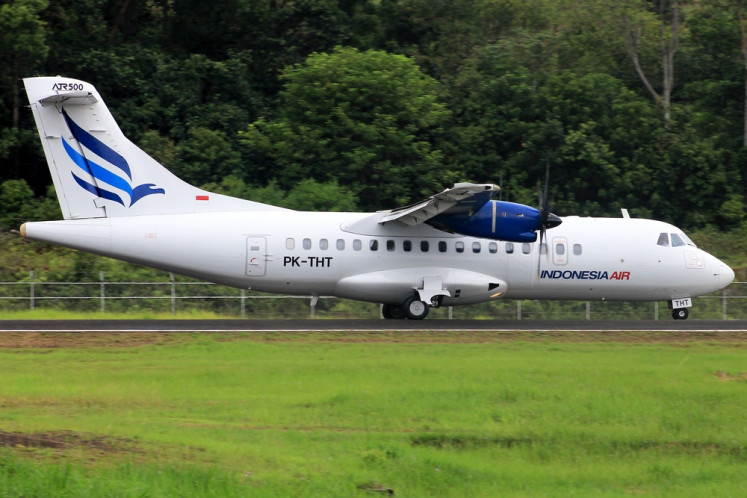Popular Reads
Top Results
Can't find what you're looking for?
View all search resultsPopular Reads
Top Results
Can't find what you're looking for?
View all search resultsA celebration in Seville
Buhaira Palace, one of Moorish heritage in Seville, Spain
Change text size
Gift Premium Articles
to Anyone
Buhaira Palace, one of Moorish heritage in Seville, Spain.
'I came from Brazil seven years ago and have never been to any other cities in Spain but Seville. I have been dedicating my life to the sevillana dance and will do so for many years to come.'
Leandro, a part-time dance teacher, confessed his great affection for the Spanish dance sevillana during a break from dancing during the Feria de Abril ' Seville´s April Fair.
Some people say the dance is part of flamenco but others do not agree because sevillana and flamenco ' although sharing similar costumes ' have different origins. Some believe flamenco was a slave dance performed to entertain the rich, conveying sadness, while sevillana is a party folk dance that expresses joy and celebration, with its own fixed steps and choreographies.
Moreover, it takes two to make it happen in sevillana. For the aim of getting a date, lots of young Sevillians are eager to come to the fair. Even those Sevillians staying abroad are willing to come back home just for this occasion.
The Seville Fair had its 166th birthday in 2013. Starting with the idea of a Basque and a Catalan having a grand fiesta in the autonomy community, the first fairs were celebrated only for three days, every 19-21 April.
The 2013 Gate of Seville's April Fair.
It comes close to the Holy Easter Week (Semana Santa), which is why many April fairs in the olden days were attached to the holy week and eventually became a week long party.
'The April Fair is Seville´s biggest occasion, side by side with the Holy Week [Semana Santa], which is celebrated [now] two weeks before the April fair,' said Juan Gonzalez, a born and bred Sevillian.
'During the Feria week Seville is paralyzed, although business should run as usual, it runs very low. But no one can ever stop the party. Some people even use this occasion for business purposes like entertaining clients.'
The people's fair is located south east to the canal of Alfonso XIII, which is part of the River Guadalquivir. The river, which crosses through 12 provinces of Southern Spain, splits Sevilla by one third in the south where the fair is located, and the rest in the north where the city center is.
It takes around twenty minutes walking from the city center to go to the fair. Some locals go in traditional way by riding a horse or horse cart. Meanwhile, buses are also a wise form of transportation as they run 24 hours during this occasion.
(From left to right) The Cathedral, Giralda Tower and the Alcazar.
The most beautiful thing to see there is the gate, which has a distinctive design every year. The giant portico looks colorful during the day and is illuminated during the night.
This year is inspired by Spain Square (Plaza de España), dedicated to the 75-year Once Foundation for the blind and the bicentennial of Seville's religious brotherhood RocÃo Triana.
This year, 1040 houses or casetas that have either red and white stripes or green or white stripes ' took part. Every caseta has a hall at the front which serves as a dance floor and to welcome guests.
Meanwhile, at the back of the temporary house is a bar that serves various drinks, including the fair's typical manzanillas or apple white wine. Youngsters nowadays go for a booster called rebujitos, a mixture between manzanillas and sprite with tons of ice.
If you feel hungry, a typical Spanish dish of sliced ham makes a perfect companion. Some casetas also serve doughnuts for snacking.
Most of the casetas belong to Sevilian families or groups of friends. The party had even started before they decorated their 'houses' for the fair.
Therefore, before you decide to come, it is recommended to find your Sevillian acquaintances in advance.
Tourists take pictures at the alcove of Madrid.
Outsiders cannot enter private casetas without knowing the host, as they are guarded. One can only enter public casetas - restaurants or bars with less feria experience. Another option is to walk
a bit further to a park containing rides and games for kids.
Seville is the most populated city in Andalucia and the fourth most populated in Spain.
'Many people love to live in Seville mostly for its climate,' admits Gonzalez, who is keen on hanging around in Seville's West San Luis Street, where many foreigners used to gather.
In terms of the climate, it felt like Jakarta with a temperature of 30 degrees, but low humidity so people sweat less.
Along with Italy's Venice and Genoa, Sevilla is another European city with the largest antique town. It contains some UNESCO world heritage sites, like the Cathedral Santa Maria de la Sede, the Palaces of Real Alcázar and the General Archive of the Indies.
Close to those buildings, you can find a mixture of Spanish exclusive neo-mudéjar and neo-gothic architectural styles in the Alfonso XIII Hotel.
Seville is seen from the top of Las Setas.
A little bit to the north stands a former tobacco factory, the University of Seville, and to the south, the King Palace of San Telmo.
These sites are within walking distance to Santa Cruz District, the former Jewish quarter of the medieval city.
Seville has the most beautiful Plaza de España in Spain, which attracted a Star Wars director to shoot here. It faces Seville's biggest park ' the Maria Luisa - and accommodates a fountain, circular canal and another mudéjar semicircle edifice along with tiled alcoves of the 48 Spanish provinces on its wall.
The historical side of Seville is amazing. It is a must-see place for those who value culture, history and architectural beauty.
And if you drop by for the April Fair, prepare your flamenco costume and learn some basic sevillana movements to enjoy the party. Olé!
' Photos by Florence Nathania














